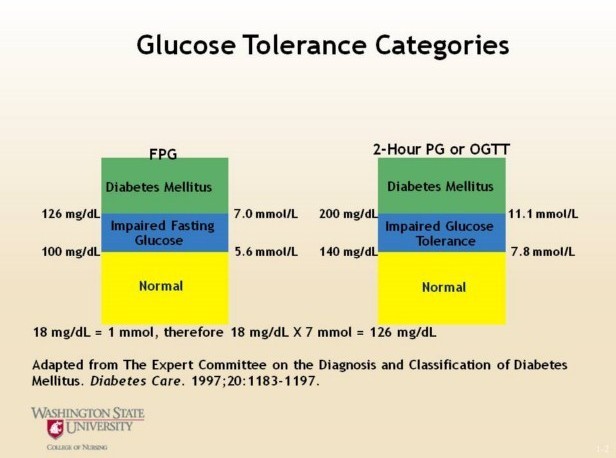A program of weight loss and exercise is recommended for a patient with impaired fasting glucose (IFG). When teaching the patient about the reason for these lifestyle changes, the nurse will tell the patient that:
The onset of diabetes and the associated cardiovascular risks can be delayed or prevented by weight loss and exercise.
Although the fasting plasma glucose levels do not currently indicate diabetes, the glycosylated hemoglobin will be elevated.
The high insulin levels associated with this syndrome damage the lining of blood vessels leading to vascular disease.
The liver is producing excessive glucose, which will eventually exhaust the ability of the pancreas to produce insulin, and exercise will normalize glucose production.
The Correct Answer is A
This statement is correct. Impaired fasting glucose (IFG) is a condition in which the fasting blood glucose level is higher than normal but not high enough to be diagnosed as diabetes. However, people with IFG are at increased risk of developing type 2 diabetes and cardiovascular disease. Weight loss and exercise can help to prevent or delay the onset of diabetes and reduce the risk of cardiovascular disease.

Nursing Test Bank
Naxlex Comprehensive Predictor Exams
Related Questions
Correct Answer is A
Explanation
The nurse will include the instruction "Offer the client the commode or urinal every 2 hours" in the teaching plan for the client's family. This approach is known as timed voiding and can help the client re-establish a regular pattern of urination. Option "a" promotes frequent voiding, which helps
prevent accidents and promotes bladder health. Option "b" is not a recommended approach and can lead to dehydration, urinary tract infections, and other complications. Option "c" is also not recommended since holding urine for extended periods can lead to bladder distention and increase the risk of urinary tract infections. Option "d" is also not recommended since catheterization should only be considered in specific cases where other options have failed or are not feasible.
Correct Answer is A
Explanation
Broccoli and kale are good sources of calcium, and by adding them to their diet, the client can increase their calcium intake without consuming milk. It is important to note that some calcium supplements may irritate the stomach but stopping them altogether is not advisable without consulting a healthcare provider. Vitamin D is not a milk product, and it is essential for calcium absorption. Avoiding foods with vitamin D can worsen the low calcium levels. Cheese is a milk product and may not be suitable for someone with a milk allergy.

Whether you are a student looking to ace your exams or a practicing nurse seeking to enhance your expertise , our nursing education contents will empower you with the confidence and competence to make a difference in the lives of patients and become a respected leader in the healthcare field.
Visit Naxlex, invest in your future and unlock endless possibilities with our unparalleled nursing education contents today
Report Wrong Answer on the Current Question
Do you disagree with the answer? If yes, what is your expected answer? Explain.
Kindly be descriptive with the issue you are facing.

